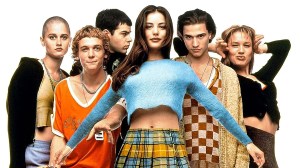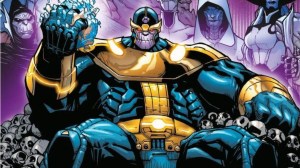Making any movie that can be deemed a “Christmas classic” is more than enough to be excited about, with Bob Clark’s 1983 movie A Christmas Story becoming such a seminal favorite, it ignited the trend of being broadcast for 24 straight hours every December. Clark’s efforts feel even more impressive knowing that, back in 1974, he already dipped his toes into holiday festivities with Black Christmas, a frightening experience that earns its own place in the annals of horror. Despite his A Christmas Story having a more widespread legacy in pop culture, many horror historians consider Black Christmas a game-changing movie whose legacy is still felt to this day.
Videos by ComicBook.com
Black Christmas tells the story of a sorority house on the verge of their holiday break that has become infiltrated by an unseen intruder sneaking into their attic. In addition to this killer taunting and tormenting the sorority sisters with obscene phone calls, he kills them off one by one as they become distracted by holiday celebrations. It’s a race against time for the authorities to track down the killer before he can eliminate all of the home’s residents.
John Carpenter and Debra Hill’s 1978 film Halloween is often credited as kicking off the slasher craze of the ’80s, which is largely true, due in significant part to the financial success of the independent picture popularizing it. The path of murder caused by the masked Michael Myers may have helped solidify a number of tropes for the subgenre, but Black Christmas (as well as the 1960 film Peeping Tom) is often considered the preeminent slasher.
One element of Black Christmas that was used to an effective degree is the use of sequences that unfold from the killer’s POV. Steven Spielberg used a similar technique for the POV of the shark in Jaws, which cemented the effectiveness of the filmmaking approach. By Clark putting the audience in the point of view of the killer, he could ratchet up the tension by displaying how even a sadistic figure could lurk in the shadows and go unnoticed. It evokes such a strong reaction that it’s easy to see how audiences could feel like they would want to shout for the on-screen characters to run away, as we’re so immersed in the scene that we really feel like we’re in their surroundings.
[RELATED: Black Christmas Getting “Definitive” Behind-the-Scenes Book]
Another key component of Black Christmas is the mystery surrounding the murderer. Audiences don’t know who the killer is or why he’s doing these things, with even the character’s nickname of “Billy” not being officially established within the movie and instead being the shorthand for the figure from members of the cast and crew. Part of the power of Halloween‘s Michael Myers comes from how he stalks an innocuous suburban locale, and while the motivations for his killing spree are unknown in that debut movie, his identity is known by both the audience and the characters themselves. Black Christmas, however, denied offering any insight into the killer, making his murders all the more frightening. Clark even went to the lengths of using different individuals to craft the shadow of the killer, keeping audiences from fully visualizing his stature.
The 2006 remake aimed to shed more light on the killer, opening with a scene in which Billy escapes from the mental institution he’s been locked away in for killing his family as a boy and heads back to his childhood home, which has been converted into a sorority house. The 2019 remake did feature a sorority house being targeted just ahead of the holidays, yet the source of terror wasn’t as much a real-world threat and included a fraternity dabbling in occult activities and the supernatural.
With the original film being inspired by a series of real-life murders and by the urban legend of a babysitter being harassed with phone calls, only for authorities to let her know the calls are coming from inside the house, Black Christmas terrified audiences who could fathom the events they just witnessed unfolding in the real world. The movie isn’t without plenty of lighter moments, though, thanks in large part to Margot Kidder’s Barb.
Black Christmas pushed boundaries not only for its horror sensibilities, but also with how it explored reproductive rights and institutional misogyny. A major plot point focuses on how sorority sister Jess (Olivia Hussey) reveals to her boyfriend Peter (Keir Dullea) that she has become pregnant. While Peter is excited by the pregnancy, Jess makes it quite clear that she plans to get an abortion, igniting a rage in Peter. This highlights not only her own agency to make these decisions, but conveys how irrational Peter becomes in his attempts to control the situation. The film even concludes by showing how Jess gets cornered by the unseen killer in the sorority house’s basement, and when Peter enters the basement, she and authorities assume him to be the killer. Additionally, throughout the film’s run time, the sorority sisters attempt to get help from the local police for all of the disturbing phone calls they have been receiving, only for the police department to dismiss them and fail to investigate these claims until it’s too late.
We can’t say that everyone who is a fan of A Christmas Story should seek out Black Christmas, as the former is a lighthearted family film and the latter is an intense experience in terror, but planning a double feature of the two helps showcase the diversity of Clark’s talents and is a worthy viewing for fans of the slasher subgenre.
What do you think of Black Christmas? Contact Patrick Cavanaugh directly on Twitter or on Instagram to talk all things Star Wars and horror!








